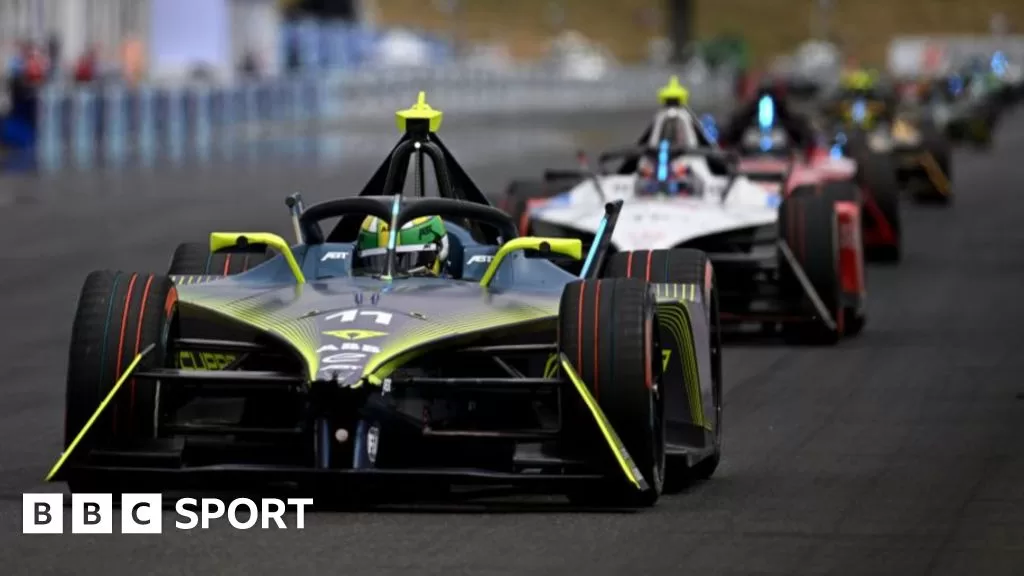The lure of electrical innovation was still a long way off for ordinary road users when Formula E arrived on the scene 10 years ago.
“Back then, anybody who talked about electric cars were either crazy or green activists,” says ABT Cupra driver Di Grassi.
As of the end of June 2024, there are more than 1.145 million fully electric cars on UK roads.
When the series started, all teams were given the same Spark-Renault SRT 01E car, with F1 giants McLaren and Williams involved in developing the electric motors and batteries.
However, an early drawback was ‘range anxiety’, or the battery’s relatively short life. When a driver came into the pits during an E-Prix, for example, instead of changing tyres, they would have to jump out and swap over to a new, fully charged car.
“I think the technology continues to develop at a fast pace, no different from mobile phones: used to be a brick, now it’s on your wrist. The same trajectory of battery technology,” says McLaren chief Brown.
Another hurdle the sport had to navigate in its pursuit of new fans was speed. The first generation of car reached a top speed of 140mph – a long way off the 186mph reach of an F1 car in 2014.
The second model saw speeds increased to around 173mph – and mid-race swaps were dumped.
Now the current iteration, the ‘gen 3’ car, has upped the ante to 200mph thanks to a new front powertrain and faster charging capabilities.
“A great part of motorsport survives because motorsport is a laboratory for technologies,” says Di Grassi.
While the sport has consistently pushed the boundaries of electric racing, Di Grassi feels a Formula E car has the potential to go even quicker.
“Having a fast and a performing car is very important for the public perception towards how they appreciate the sport,” Di Grassi adds. “So for me, yes, with the performance of the car, there is a direct correlation to engaging the fans.”
